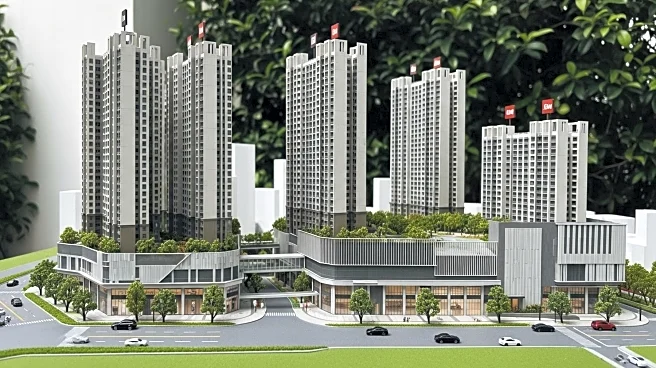What's Happening?
Castlebridge Residential Development has announced plans for a significant mixed-use project in Huntersville, North Carolina. The development will encompass more than 100 new townhomes and will be situated on a 17-acre site at The Park Huntersville. The project is set to include a combination of residential units, shops, medical offices, and other facilities. The site is located on Reese Boulevard, as reported by the Charlotte Business Journal. This development aims to enhance the local infrastructure and provide a variety of amenities to the community.
Why It's Important?
The introduction of a mixed-use development in Huntersville is poised to have a substantial impact on the local economy and community. By integrating residential, commercial, and medical facilities, the project is expected to attract new residents and businesses, thereby boosting economic activity in the area. The development could also address housing demands and provide essential services, contributing to the overall growth and modernization of Huntersville. Stakeholders such as local businesses, potential residents, and healthcare providers stand to benefit from the increased accessibility and convenience offered by the project.
What's Next?
As the project progresses, local authorities and Castlebridge Residential Development will likely engage in further planning and community consultations to ensure the development meets the needs of Huntersville residents. The construction phase will follow, with potential impacts on local traffic and infrastructure. Community members and businesses may anticipate updates on zoning approvals and construction timelines. The successful completion of this project could set a precedent for future developments in the region, encouraging similar investments.
Beyond the Headlines
The mixed-use project in Huntersville reflects broader trends in urban planning, where integrated developments are increasingly favored for their ability to create vibrant, self-sustaining communities. This approach can lead to reduced commuting times, lower environmental impact, and enhanced quality of life for residents. The project may also influence regional planning strategies, encouraging other areas to adopt similar models to address urban sprawl and infrastructure challenges.













